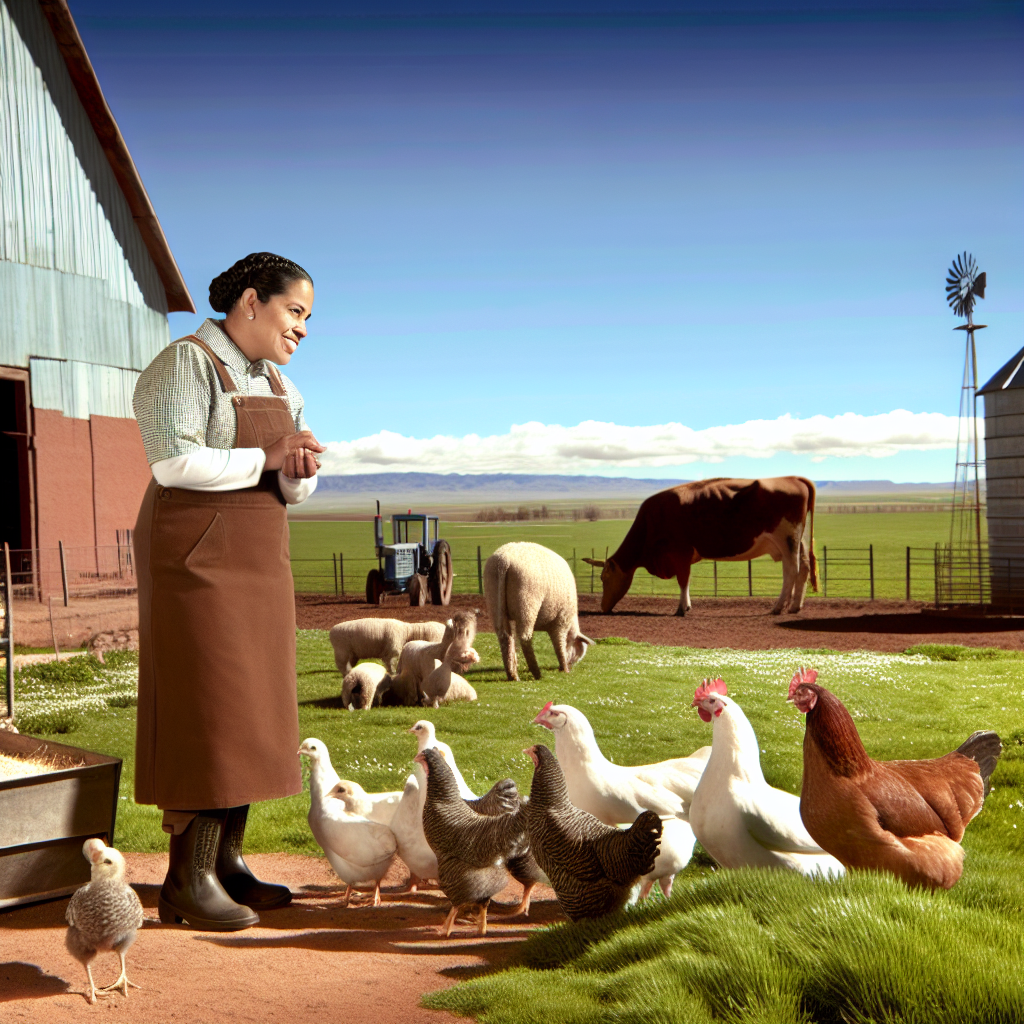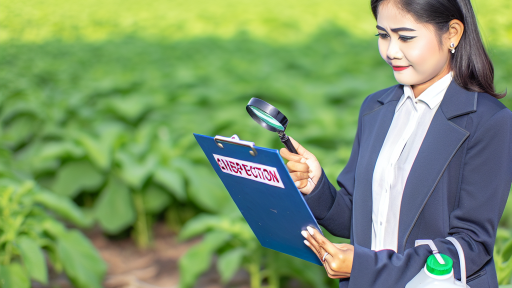Understanding Animal Welfare Standards
Definition and Importance
Animal welfare standards refer to guidelines ensuring the humane treatment of farm animals.
These standards promote animal health, comfort, and overall well-being.
Moreover, they help in maintaining ethical farming practices.
Key Principles
Several key principles define effective animal welfare standards.
First, animals must have sufficient space to move freely.
Additionally, access to proper food and clean water is crucial.
Furthermore, environments should minimize stress and suffering.
Global and Regional Standards
Animal welfare standards vary worldwide, reflecting local practices and cultures.
For instance, the European Union enforces stringent regulations.
In contrast, some regions in the United States follow different guidelines.
As a result, farmers must familiarize themselves with applicable standards.
Stakeholder Involvement
Various stakeholders influence animal welfare standards on farms.
Farmers play a vital role by implementing these standards daily.
Advocacy groups also contribute by raising awareness and promoting best practices.
Moreover, consumers increasingly demand transparency regarding animal treatment.
Transform Your Agribusiness
Unlock your farm's potential with expert advice tailored to your needs. Get actionable steps that drive real results.
Get StartedContinuous Assessment and Improvement
Periodic reviews of animal welfare standards are essential for progress.
This ensures the guidelines evolve with scientific advancements and societal expectations.
Consequently, farmers should stay informed about new research and recommended practices.
Benefits of Compliance
Meeting animal welfare standards offers significant benefits for farmers.
These include improved animal health and productivity.
Additionally, compliant farms often enjoy enhanced market access.
Ultimately, adherence to standards contributes to a positive public image.
Importance of Animal Welfare in Modern Farming
Enhancing Animal Health and Well-being
Animal welfare is crucial for the health of livestock on farms.
Healthy animals contribute to higher productivity levels.
They also produce better quality meat and dairy products.
Furthermore, proper care reduces the need for antibiotics.
Building Trust with Consumers
Consumers increasingly demand ethical treatment of animals.
Meeting animal welfare standards enhances a farm’s reputation.
Transparency in farming practices fosters consumer trust.
As a result, farms can improve sales and customer loyalty.
Regulatory Compliance and Legal Obligations
Governments enforce animal welfare regulations to protect animals.
Compliance with these regulations avoids legal penalties.
Additionally, it helps farms secure funding and grants.
Being proactive in meeting standards shows responsibility.
Economic Benefits of Animal Welfare
Improving animal welfare can lead to reduced operational costs.
Healthy animals require fewer healthcare interventions over time.
This approach can result in significant long-term savings.
Moreover, it can enhance overall productivity and profitability.
Positive Environmental Impact
Good animal welfare practices often align with sustainable farming.
Showcase Your Farming Business
Publish your professional farming services profile on our blog for a one-time fee of $200 and reach a dedicated audience of farmers and agribusiness owners.
Publish Your ProfileThey lead to better waste management and resource use.
Healthy animals can also improve pasture quality and biodiversity.
These benefits contribute to a more resilient agricultural system.
Physical Space Requirements for Different Animal Species
Cattle
Cattle require ample space for movement and grazing.
Each adult cow needs at least 1.5 acres of pasture.
Indoor housing must provide a minimum of 100 square feet per animal.
Ventilation in barns is crucial for their health.
Provide bedding to ensure comfort and reduce injury risk.
Pigs
Pigs thrive in environments that allow rooting and exploration.
A single pig should have at least 24 square feet of living space.
Group housing encourages natural social behaviors.
Ensure access to fresh air and clean water at all times.
Concrete floors should be covered with bedding for comfort.
Chickens
Chickens need a safe and spacious coop for roosting and laying eggs.
Each bird requires a minimum of 4 square feet indoors.
Outdoor runs should provide an additional 8 square feet per chicken.
Avoid overcrowding to reduce stress and promote health.
Sheep
Sheep require sufficient pasture for grazing and social interaction.
Each sheep should have at least 0.5 acres of grazing land.
Indoor housing must provide 20 square feet per adult sheep.
Provide shelter from harsh weather to maintain their well-being.
Goats
Goats need space to climb, explore, and engage in natural behaviors.
Allow at least 200 square feet per goat in outdoor enclosures.
Indoors, each goat should have around 15 square feet of space.
Enrichment structures, like platforms, enhance their environment.
Find Out More: Farm-To-Table Legislation and Its Impact on Farm Revenue Streams
Nutritional Needs and Feeding Practices for Optimal Welfare
Understanding Animal Nutritional Requirements
Each animal species has specific nutritional requirements.
Farmers must understand these needs to promote health.
Essential nutrients include proteins, carbohydrates, vitamins, and minerals.
Consulting a veterinarian can help ensure proper nutrient balance.
Designing Effective Feeding Programs
Feeding programs should cater to the life stages of the animals.
Young animals require different nutrients than mature ones.
Moreover, ruminants have unique dietary needs compared to non-ruminants.
Adjust rations based on age, weight, and production goals.
Provides Fresh and Clean Water
Access to clean water is vital for animal welfare.
Animals should have fresh water available at all times.
Water needs may vary with temperature and activity levels.
Regularly clean water sources to prevent contamination.
Implementing Feeding Practices
Introduce animals to feed gradually to prevent digestive issues.
Use high-quality feed ingredients to meet their dietary needs.
Showcase Your Farming Business
Publish your professional farming services profile on our blog for a one-time fee of $200 and reach a dedicated audience of farmers and agribusiness owners.
Publish Your ProfileMonitor feed intake to address issues early.
Adjust feeding frequencies to reduce competition among animals.
Utilizing Nutritional Supplements
Sometimes, animals may need nutritional supplements.
These can fill gaps in the diet when necessary.
Examples include probiotics and omega-3 fatty acids.
However, consult with a nutritionist before adding supplements.
Monitoring Body Condition Scoring
Regularly assess the body condition of animals.
This helps identify underfeeding or overfeeding issues.
Use standardized body condition scoring systems.
Adjust feeding programs based on these assessments.
See Related Content: How Agricultural Policies Address Climate Challenges
Health Monitoring and Veterinary Care: Best Practices
Importance of Regular Health Monitoring
Regular health monitoring plays a crucial role on farms.
It allows farmers to detect issues early.
This practice reduces the risk of spread among animals.
Moreover, early intervention often leads to better outcomes.
Utilizing technology can enhance monitoring efforts.
Establishing a Veterinary Care Plan
A comprehensive veterinary care plan is essential.
Farmers should collaborate with local veterinarians.
This relationship ensures access to timely care and advice.
The plan needs to include vaccination schedules.
Furthermore, it should outline treatment protocols for common ailments.
Implementing Best Practices for Treatment
Farmers must follow best practices for animal treatment.
This includes maintaining cleanliness in animal housing.
Proper nutrition supports overall health and recovery.
Also, isolation of sick animals is critical to prevent outbreaks.
Training for Farm Staff
Training staff on animal health is vital.
Knowledgeable staff can recognize signs of illness quickly.
Regular workshops can keep the team informed and skilled.
Encouraging a culture of care enhances animal welfare standards.
Documenting Health Records
Keeping accurate health records is necessary for effective monitoring.
Farmers should document vaccinations, treatments, and health incidents.
This documentation helps in identifying health trends over time.
Additionally, it aids in compliance with welfare regulations.
Regular review of these records can reveal areas for improvement.
Utilizing Technology for Better Care
Technology can vastly improve veterinary care on farms.
Electronic health records streamline documentation processes.
Wearable health devices monitor animal conditions in real-time.
Such tools provide alerts for any abnormalities in health.
This proactive approach can enhance overall herd health.
Discover More: Wildlife Conservation Regulations in Farming
Showcase Your Farming Business
Publish your professional farming services profile on our blog for a one-time fee of $200 and reach a dedicated audience of farmers and agribusiness owners.
Publish Your ProfileBehavioral Enrichment Strategies to Enhance Animal Well-being
Understanding Behavioral Enrichment
Behavioral enrichment supports the mental and physical health of farm animals.
It promotes natural behaviors and reduces stress levels.
Farmers can implement various enrichment techniques to enhance animal welfare.
Creating a Stimulating Environment
A stimulating environment encourages animals to explore their surroundings.
Enrichment should include both social and physical elements.
For instance, providing adequate space for movement is essential.
Furthermore, diversifying the environment with obstacles or hiding spots can be beneficial.
Types of Enrichment
- Social enrichment promotes interaction among animals.
- Physical enrichment includes toys or structures for play.
- Feeding enrichment can involve puzzle feeders or treats hidden in the environment.
Implementing Routine Changes
Routine changes can reduce monotony in animal life.
Regularly altering feeding times or locations keeps animals engaged.
Moreover, varying daily activities fosters curiosity and exploration.
Monitoring Animal Behavior
Monitoring behavior helps identify the effectiveness of enrichment strategies.
Farmers should observe animals for signs of boredom or stress.
Adjustments can be made based on these observations.
Utilizing Technology
Technology can aid in tracking animal behavior effectively.
Apps and software can analyze activity levels and social interactions.
Farmers can then tailor enrichment approaches more effectively.
Find Out More: Farmers’ Guide to Climate Legislation Compliance

Record Keeping and Compliance: Documenting Animal Welfare Practices
The Importance of Record Keeping
Effective record keeping is essential for meeting animal welfare standards.
It provides a clear history of animal care practices on farms.
Moreover, records help ensure compliance with legal requirements.
Accurate documentation supports transparency in animal husbandry.
Types of Records to Maintain
Farmers should maintain various types of records for optimal compliance.
- Health and veterinary records should be noted.
- Nutrition and feed information must be documented.
- Breeding and reproduction records are crucial.
- Staff training records should be kept updated.
Implementing a Record Keeping System
Choose a record keeping system that suits your farm’s needs.
Utilize digital tools for easier access and management.
Regularly update records to ensure they are current.
Designate a responsible individual to oversee record maintenance.
Ensuring Compliance with Regulations
Stay informed about current animal welfare regulations.
Conduct regular audits to verify compliance status.
Engage with regulatory bodies for guidance on best practices.
Additionally, participate in training programs on animal welfare standards.
Utilizing Records for Continuous Improvement
Review records regularly to identify areas for improvement.
Analyze data to find trends in animal health and welfare.
Incorporate feedback into your animal care practices.
Continuous improvement leads to better outcomes for animals and farms.
Training and Educating Farm Staff on Animal Welfare Importance
Understanding Animal Welfare
Animal welfare focuses on the well-being of farm animals.
Farm staff must comprehend this concept thoroughly.
Educating them ensures they prioritize animal health on the farm.
Additionally, awareness fosters better relationships with animals.
Developing Comprehensive Training Programs
Farm training programs should be structured and accessible.
Include topics such as proper handling techniques for animals.
Showcase Your Farming Business
Publish your professional farming services profile on our blog for a one-time fee of $200 and reach a dedicated audience of farmers and agribusiness owners.
Publish Your ProfileAlso, emphasize the signs of stress and illness in animals.
Hands-on training can enhance learning experiences effectively.
Furthermore, incorporate real-life scenarios to develop problem-solving skills.
Utilizing Experienced Trainers
Seek experienced trainers for effective education.
Individuals like Dr. Emily Carter can offer valuable insights.
Invite guest speakers with expertise in animal welfare.
Their knowledge can inspire staff commitment to best practices.
Encouraging Continuous Learning
Animal welfare is an evolving field.
Encourage farm staff to attend workshops and seminars regularly.
Provide resources such as articles and videos on animal welfare.
Additionally, create a mentorship program for ongoing support.
Assessing Training Effectiveness
Regularly assess the effectiveness of training programs.
Use surveys to gather feedback from staff.
Monitor changes in staff behavior and animal care quality.
Make adjustments based on feedback to enhance the program.
Implementing Biosecurity Measures to Protect Animal Health
Understanding Biosecurity
Biosecurity is crucial for protecting animal health on farms.
It involves strategies to prevent disease introduction and spread.
Farmers must prioritize biosecurity to ensure animal welfare.
Identifying Key Biosecurity Practices
Regularly cleaning and disinfecting equipment is essential.
Farmers should control access to animal areas.
Only authorized personnel should enter these zones.
Monitoring animal health frequently helps identify issues early.
Furthermore, using proper isolation procedures for sick animals is vital.
Training Personnel
Educating farm staff about biosecurity measures is necessary.
Training should cover disease recognition and prevention techniques.
Well-trained employees can significantly contribute to overall animal health.
Implementing Strict Animal Movement Protocols
Controlling animal movement limits disease exposure.
Farmers should restrict visits from external animals.
When introducing new animals, follow a quarantine period.
This practice minimizes risks of disease transmission.
Utilizing Vaccination and Health Monitoring
Regular vaccinations protect animals against common diseases.
Farmers should maintain schedules for vaccinations diligently.
Continuous health monitoring further ensures early detection of illnesses.
Additionally, surveillance systems can track health trends over time.
Community Engagement and Transparency in Animal Welfare Practices
The Value of Community Engagement
Engaging the local community fosters trust and builds relationships.
Farmers must listen to community concerns about animal welfare.
This engagement can include town hall meetings and social media discussions.
Additionally, transparency encourages community support for farm practices.
Implementing Transparent Practices
Transparency in animal welfare practices leads to greater accountability.
Farmers should share their animal care protocols openly.
Showcase Your Farming Business
Publish your professional farming services profile on our blog for a one-time fee of $200 and reach a dedicated audience of farmers and agribusiness owners.
Publish Your ProfileUtilizing reports and visual content can illustrate these practices.
This approach addresses consumer concerns directly and effectively.
Collaborating with Local Organizations
Partnering with local animal welfare organizations enhances credibility.
These organizations can provide valuable resources and guidance.
Co-hosting workshops or educational events is an effective strategy.
Such collaborations showcase a commitment to animal welfare standards.
Feedback Mechanisms
Establishing feedback channels strengthens community ties.
Farmers should encourage input from customers and community members.
Utilizing surveys and direct communications can gather insights.
Responding to this feedback demonstrates adaptability and care.
Utilizing Technology for Transparency
Modern technology can enhance transparency in farming operations.
Farmers can use video streaming to showcase daily animal care routines.
Online platforms can facilitate sharing of welfare audits and reports.
This use of technology fosters trust and encourages consumer engagement.
Additional Resources
The Animal Welfare Act: Background and Selected Issues
Guide for the Care and Use of Laboratory Animals, 8th edition …




